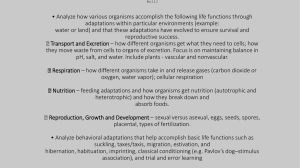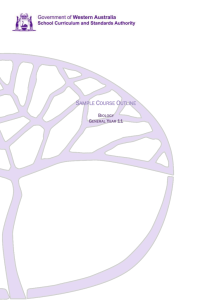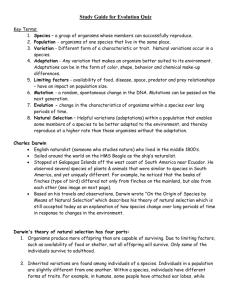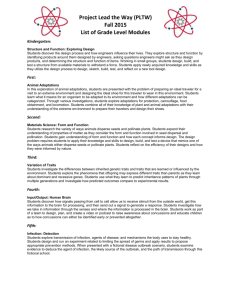Feeding Frenzy - the Egg Harbor Township School District
advertisement
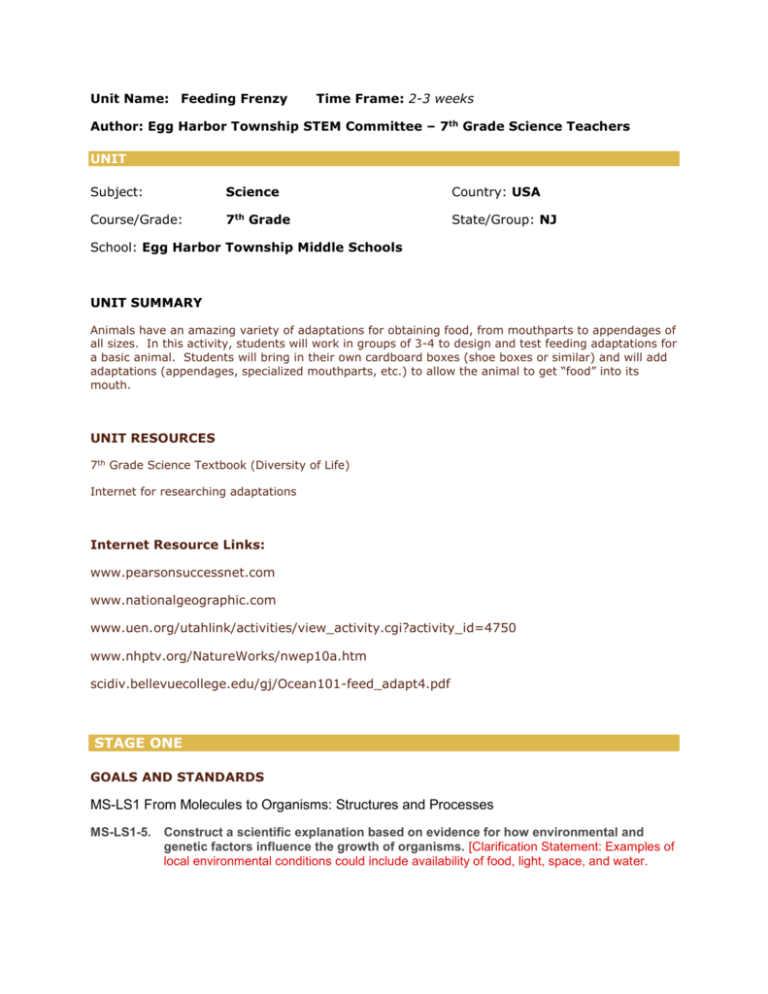
Unit Name: Feeding Frenzy Time Frame: 2-3 weeks Author: Egg Harbor Township STEM Committee – 7th Grade Science Teachers UNIT Subject: Science Country: USA Course/Grade: 7th Grade State/Group: NJ School: Egg Harbor Township Middle Schools UNIT SUMMARY Animals have an amazing variety of adaptations for obtaining food, from mouthparts to appendages of all sizes. In this activity, students will work in groups of 3-4 to design and test feeding adaptations for a basic animal. Students will bring in their own cardboard boxes (shoe boxes or similar) and will add adaptations (appendages, specialized mouthparts, etc.) to allow the animal to get “food” into its mouth. UNIT RESOURCES 7th Grade Science Textbook (Diversity of Life) Internet for researching adaptations Internet Resource Links: www.pearsonsuccessnet.com www.nationalgeographic.com www.uen.org/utahlink/activities/view_activity.cgi?activity_id=4750 www.nhptv.org/NatureWorks/nwep10a.htm scidiv.bellevuecollege.edu/gj/Ocean101-feed_adapt4.pdf STAGE ONE GOALS AND STANDARDS MS-LS1 From Molecules to Organisms: Structures and Processes MS-LS1-5. Construct a scientific explanation based on evidence for how environmental and genetic factors influence the growth of organisms. [Clarification Statement: Examples of local environmental conditions could include availability of food, light, space, and water. MS-LS2 Ecosystems: Interactions, Energy, and Dynamics MS-LS2-1. Analyze and interpret data to provide evidence for the effects of resource availability on organisms and populations of organisms in an ecosystem. [Clarification Statement: Emphasis is on cause and effect relationships between resources and growth of individual organisms and the numbers of organisms in ecosystems during periods of abundant and scarce resources.] MS-LS4 Biological Evolution: Unity and Diversity MS-LS4-2. Apply scientific ideas to construct an explanation for the anatomical similarities and differences among modern organisms and between modern and fossil organisms to infer evolutionary relationships. [Clarification Statement: Emphasis is on explanations of the evolutionary relationships among organisms in terms of similarity or differences of the gross appearance of anatomical structures.] ENDURING UNDERSTANDINGS Students will be able to construct and design adaptations of an animal to maintain basic needs of survival. They will understand that when designing animal adaptations, they need to consider how appendages will be attached to the body, and how those appendages will get the food into the animal’s mouth. ESSENTIAL QUESTIONS How do animals use appendages to obtain food? Why do different animals utilize different appendages to obtain their food? KNOWLEDGE AND SKILLS Students will learn how to work with others and consider other ideas when working together. Students will be able to identify the different ways that animals obtain food. Vocabulary: Adaptation: An inherited behavior or physical characteristic that helps an organism survive and reproduce in its environment. Ecosystem: An area that includes two or more biotic factors and one abiotic factor. Biotic Factor: A living thing Abiotic Factor: A nonliving thing Carnivore: An animal that consumes animals. Herbivore: An animal that consumes both plants. Omnivore: An animal that consumes both plants and animals. STAGE TWO PERFORMANCE TASKS - - Over the course of a few weeks leading up to project, have students collect cardboard shoe boxes to use as the animal body Depending on time constraints, give students 2-3 class periods to research animal adaptations and more specifically, different ways animals obtain food and how they get the food from its source into their mouth Place students in groups of 3 (or 4 if needed) Allow one class period for students to design their animal and its adaptations on paper Give each group access to selected materials that include but are not limited to: plastic utensils, tooth picks, coffee stirrers, chop sticks, rubber bands, tacks, tape, glue, rulers, string, tongue depressors Students will need 2-4 class periods to construct the base model and adaptations Once models are complete, students will test their adaptations using food items that include marshmallows, cotton balls, hole punch confetti, grass clippings, etc. Students will have three 30 second trials to test their prototype and collect as much food as they can. Students need to use only the appendages attached to the model to collect the food and will be judged on how much food is placed into the animal’s mouth. Students may not physically touch the “food”, but may only use appendages After testing prototype, allow student 1-2 class periods to redesign their models and adaptations, and compare results OTHER EVIDENCE Students will be assessed based on pre-assigned scoring sheet and rubric. Students will be graded on research, initial design drawing, prototype and adaptations, and redesign of original model. STAGE THREE LEARNING PLAN Students will evaluate their redesign through a series of questions (see attached – p.28 of attachment) Students will be scored based on a scoring sheet (see attached)


